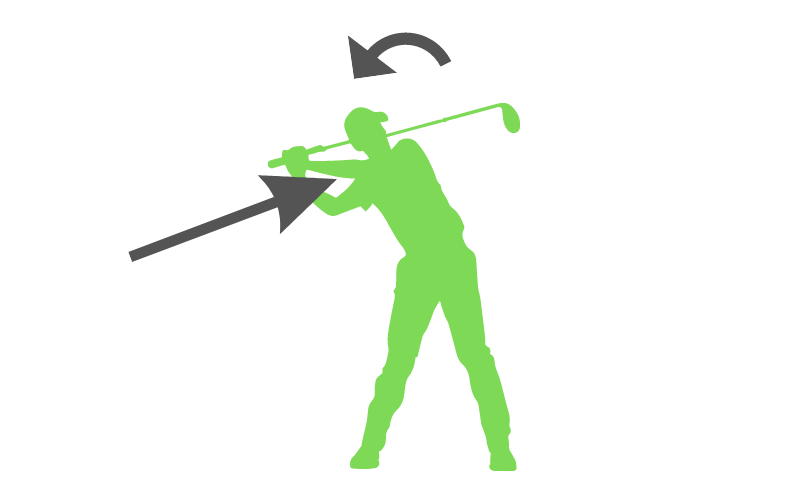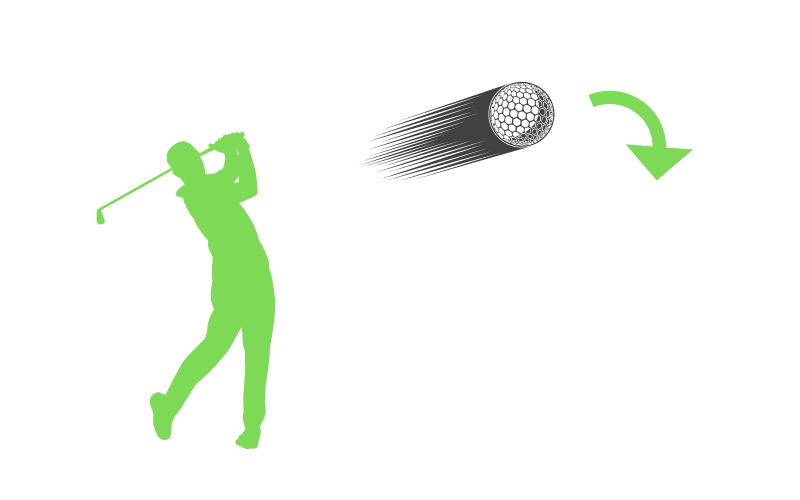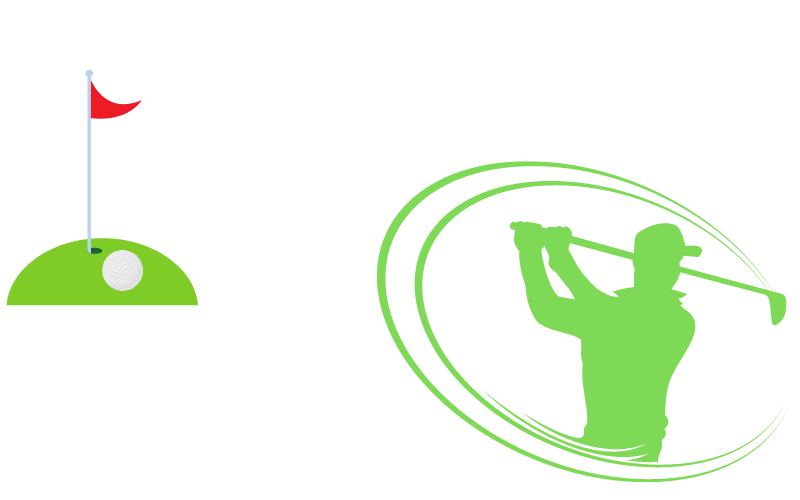Examining the Problems with a One Plane Golf Swing | The Pros and Cons!
Choosing the correct golf swing while golfing is a must for smooth and the best shots. You need to develop an understanding of what the different swings are and how they differ from each other for selecting the right swing.
The single or one plane golf swing is quite popular amongst the regular golfers. In one plane golf swing, you use just one single plane for downswing, backswing and impact positions.
If you want to become a consistent golf player, this guide is just for you to understand how the one plane swing works. You will learn the advantages that come with this swing as well as the problems you might face in this swing.

Problems With One Plane Golf Swing
Golf instructor’s usually seem to avoid this particular swing method for a variety of reasons.
It might be due to the several inconveniences faced while using this one plane swing compared to the two plane swing.
Even some of the best players in the world choose two plane swings instead of the one plane swing.
Here are the problems usually faced with the one plane swing:
Limits The Power Output

It is hard to generate a big amount of power by using the one plane swing. In this swing, the left arm stays close to the body and provides an in and out swing path.
This creates a smaller arc and uses more rotational force during the swing.
Such swings result in the loss of power after the golf ball is hit. The fairway wood, driver or other larger golf clubs face this problem often.
This swing limits the power yardage of those clubs. As a result, golfers can’t hit high power fades from a long off the tee.
Lack Of Speed And Distance

One plane swing can largely cut down on the speed and distance supposed to cover the swing.
Since this swing involves a large amount of body rotation, the lack of appropriate rotation leads to a lessened speed.
It also directly affects the timing of the shots. If your timing isn’t right, this swing will fail to cover the supposed distance with the required speed.
When you move too fast during the backswing, the swing lacks the impact upon force.
So, the ball has much less speed than expected. With that reduced amount of speed, it also goes a smaller distance.
Unable To Square The Golf Club Upon Impact

Many golfers might be unable to square the golf club upon the moment of impact.
During the impact, the hips of the golfers need to move towards the golf club. If the golfer loses the correct posture, the rotation through the impact is incomplete.
This posture is usually difficult for golfers to hold during backswing and downswings with one plane swing.
In such circumstances, they are unable to hit the ball squarely on the golf club upon impact for full results.
Leads To Hooks
Because of the in and out swing path of the one plane swing, you can start noticing hooks.
On the backswing, the golf club is taken more on the inside. Then the downswing occurs on the same exact plane instead of rerouting the swing.
So, the sweeping force of the one plane swing leads to the creation of hooks.
The shots become very bad and hit the snap hook left as well. You might also hit a push block in this state which is even more difficult to deal with.
Causes Shanks

If the golf swing gets too flat during the downswing, it might be the reason for shanks being created.
Another thing you should keep an eye on is delivering the one plane swing from the inside of the golf club.
Not staying in proper posture and rotating the body through the impact are some of the main reasons for causing shanks.
Inconsistent Shots
Due to the trouble of maintaining the posture needed for the one plane golf swing, the shots continue to become inconsistent.
It is hard to stay in the right posture and rotate through the impact. The flat backswing makes it hard to hit the ball squarely.
As a result, you can’t deliver the club deeper into the shot. Without full impact on the ball, the shot becomes unsteady and rough.
Advantages Of One Plane Golf Swing

One plane golf swings can be very beneficial for targeted golf users. It can provide a lot of advantages to people of all ages and skills in its own way. Let’s take a look at the benefits the one plane golf swing has to offer below:
Easier To Repeat
One plane golf swing gives more of a natural feeling upon completing it. Consistency and repeatability is very necessary in terms of golf club swings.
One plane swing provides exactly that chance to repeat the swing over and over again without difficulty.
Once you get the handle on the correct posture and can rotate your body to the maximum level, you can hit the swings easily.
Your body will get used to the process and you can repeat the swings more efficiently without overanalyzing.
Less Body Movement Required
A great thing about the one plane golf swing is that you can get the most out of this swing with little body movement.
With just a smallest lower body movement, it is possible to create a consistent shot in one plane swing.
This reduced movement helps in alleviating back pains and body pains. Therefore, this swing is perfect to use for elderly people as well.
Produces A Natural Draw
A draw during the golf shots means more distance covered. It is a desirable thing for most golfers. One plane swing makes it easier and more attainable to get a natural draw upon swinging.
Since this swing focuses on delivering the shot from the inside, it gives a flatter swing.
The arms and shoulders stay in the same single plane in this swing. So, the resultant swing path is in to out. This is the ideal situation of producing a more natural draw.
Creates Speed and Distance
One plane swing is more of a flatter swing in terms of the golf shots. If you can hit the club squarely, the flatter swing will produce more speed and distance instantly.
Continue to rotate the body during the swing and create more inclination. With this swing, the ball will travel more distance at an increased speed.
How To Use One Plane Golf Swing?
The key to using one plane golf swing effectively is to learn the necessary points of the swing. It is quite easy to master if only you’re aware of the correct body positions and movements.
Here, I have included the steps of learning how to use one plane golf swing for your convenience.
- Change the address position. Keep both of your feet externally wide stance. It has to be wider than your shoulder width.
- Adjust the grip on the club. Keep the club shaft and your left arm in a straight position.
- Tilt and keep the right shoulder below the left shoulder.
- Maintain the stance. Tilt your upper body so that the sternum stays behind the golf ball.
- Don’t rotate around your back foot.
- Maintain the side body bend by rotating around your whole body.
- Keep your back foot fixed and rotate around your lead foot during the swing. The back knee should be flexed towards the swing.
- Extend your arms and hit the golf ball squarely.
- Stay in the posture even after the swing. Keep maintaining the spine angle correctly.
FAQs
Let’s get to know a few more interesting facts about the one plane golf swing. It will clear up the topic at hand a lot more.
Is A One Plane Swing Easier For My Back?
One plane swing is inarguably easier for your back if you have problems with back pain. Due to the easygoing movements and simple posture, it deals with back problems and relieves back pain.
Should I Have A One Or Two Plane Golf Swing?
If you are flexible and have a strong recoil, one plane golf swing will be better for you. On the other hand, someone with a good sense of rhythm and timing should use a two plane golf swing.
Who Uses A One Plane Golf Swing?
The greatest ball striker of all time Moe Norman uses a one plane golf swing. Ben Hogan, Todd Graves, Jim Hardy are some of the other pro golfers who use a one plane golf swing in PGA tours.
Is A One Plane Golf Swing Better?
One plane golf swing is better due to the easy repeatability and simplicity. It takes less time to be accurate. Even anyone with a shallow swing can master this swing in no time and maintain it.
Conclusion
Golf is a pretty difficult game to master. For your ease of learning and better performance, learning the one plane golf swing will make a huge impact.
If you are more flexible, this swing style will suit you perfectly. Consistent practicing and repeatability can hone your skills on this particular swing and improve your golf performance to a great extent.
There could be a few of the mentioned problems that you face during this swing. However, with the right posture and bending angle, you can minimize the cons greatly.
So, get on with practicing the one plane swing right away if you want to improve your golf swing skills.
- Read Also: Breaking Down Bay Area Country Club Membership Fees: What You Need to Know
- Read Also: Worst Golf Course in America | Uncovering the Terrible Truth
- Read Also: What Kind of Clubs Does Topgolf Use: An Insider’s Look
- Read Also: Pros And Cons Of Stack and Tilt Golf Swing | Discussion
- Read Also: Wedge Swing vs Iron Swing: Here is the Difference You Need
- Read Also: 2 Iron vs 3 Woods: How Do You Choose the Right One?
Meet Jalal, a passionate golf writer and the driving force behind Golfertroop.com, your go-to destination for all things golfing! Whether you’re a seasoned golfing veteran or a beginner taking your first swing, Jalal is here to assist you in making the most out of your golfing experience.



![What Tees Do LPGA Players Use? [Explained]](https://www.golfertroop.com/wp-content/uploads/2023/08/What-Tees-Do-LPGA-players-use-768x419.png)


